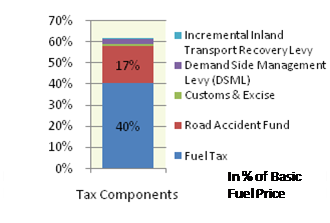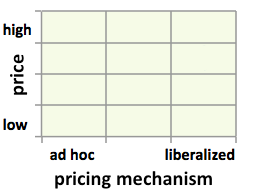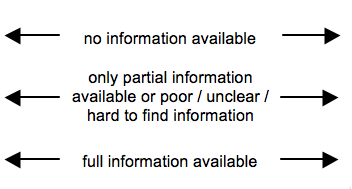Knowledge fuels change - Support energypedia!
For over 10 years, energypedia has been connecting energy experts around the world — helping them share knowledge, learn from each other, and accelerate the global energy transition.
Today, we ask for your support to keep this platform free and accessible to all.
Even a small contribution makes a big difference! If just 10–20% of our 60,000+ monthly visitors donated the equivalent of a cup of coffee — €5 — Energypedia would be fully funded for a whole year.
Is the knowledge you’ve gained through Energypedia this year worth €5 or more?
Your donation keeps the platform running, helps us create new knowledge products, and contributes directly to achieving SDG 7.
Thank you for your support, your donation, big or small, truly matters!
Fuel Prices South Africa
Part of: GIZ International Fuel Price database
Also see: South Africa Energy Situation
Fuel Pricing Policies
| Local Currency: | ZAR |
| Exchange Rate: | 7.00221
|
| Last Update: |
The “Energy Department of South Africa” is a governmental institution in charge of regulating fuel prices. The “National Petroleum, Gas and Oil Corporation of South Africa” (PetroSA) is the national oil company, operating refineries and oil rigs.
Fuel prices are calculated based on elaborated formulas and methods. The Basic Fuel Price (BFP) is the refinery price for one litre of fuel, including the price for crude oil and any import, handling and (sea-)transportation costs. Inland transportation costs, wholesale margins and distribution costs are calculated taking into account the approximate, actual costs and also some limited commercial profit (between 10% and 20% on the depreciated book value of assets per year, calculated for a fictive, average company; if the actual value exceeds this intervall, margins are recalculated).
Pump prices for petrol and wholesale prices for diesel are regulated – i.e. the retail margins for diesel are liberal (see 2.).
Slate Levy / Slate Account: Since the BFP changes daily (because of the crude oil price and the US$ exchange rate), but fuel prices are regulated only monthly, differences arise. I.e. customers pay too much on some days or too less on other days each month. This price differences are multiplied by the approximate amount of fuel sold at that specific day and summed up over one month. This sum is then cleared with a consistent “Slate Account”. A Slate Levy is only imposed for the next month, if this Slate Account balance drops below zero (as of September 2010, the Slate Account balances are almost +900 Mio. Rand for Petrol and ~ +310 Mio Rand for Diesel).
Several other levies are imposed, including a levy for the Road Accident Fund (RAF) of 0.72 Rand/litre (as of Nov.2010).
Fuel Prices and Trends
| Gasoline 95 Octane | Diesel | |
|---|---|---|
| in USD* |
|
|
| in Local Currency |
|
|
* benchmark lines: green=US price; grey=price in Spain; red=price of Crude Oil
Fuel Price Composition
Price composition for one litre of Gasoline 95 Octane as of 2010/11/03 in Guateng ("inland").


Source: http://www.energy.gov.za/files/esources/petroleum/petroleum_breakdown.html (inland, 95 octance petrol, unleaded)
Retailers set their margins for diesel freely; in Nov. 2011 it was observed ~0.50 rand (~7 US-Cents) and thus being lower than the regulated retail margin for petrol (0.81 Rand or 12 US-Cents); all other values are very similar for Diesel, see source above.
A “Slate Levy” exists, but was zero in November 2010 (see description under 3.)
An “Equalization Fund Levy” for equalising fuel prices exists, but is usually set to zero.
All documents from the web distinguish between coastal prices (cheapest) and inland prices, varying through transportation costs from the coast (harbors/refineries) to regional depots. The price in the province of Guateng is used representatively for the “inland”-prices, being close to the average and also being the most populated and economically most important province of South Africa.
A constant “Demand Side Management Levy” of 0.1 Rand/litre only for 95 octane petrol is used to artificially promote the consumption of the 93 octane petrol, which is slightly cheaper to produce while exact production costs are not calculated separately.
At a Glance
| Regulation-Price-Matrix |
| ||||
 |

|

|

| ||
All information, including mechanisms, policies and actual prices, is presented very clearly, comprehensively, up-to-date and well-structured. Statistics of (observed) Diesel pump prices might be added.
Sources to the Public
| Type of Information | Web-Link / Source |
|---|---|
| Other Information | http://www.energy.gov.za/files/petroleum_frame.html (Price history, institutions, ...) |
| Price Composition | http://www.energy.gov.za/files/esources/petroleum/petroleum_breakdown.html |
| Pricing Mechanism | http://www.energy.gov.za/files/esources/petroleum/petroleum_docs1.html |
| Pump prices and margins | http://www.energy.gov.za/files/petroleum_frame.html (Under „Petrol Price Archive“ and „Latest Fuel Prices”. Pump prices for Diesel are not monitored.) |
| Wholesale Prices | http://www.energy.gov.za/files/petroleum_frame.html (Under „Petrol Price Archive“ and „Latest Fuel Prices”. Pump prices for Diesel are not monitored.) |
Contact
Please find more information on GIZ International Fuel Price Database and http://www.giz.de/fuelprices



















